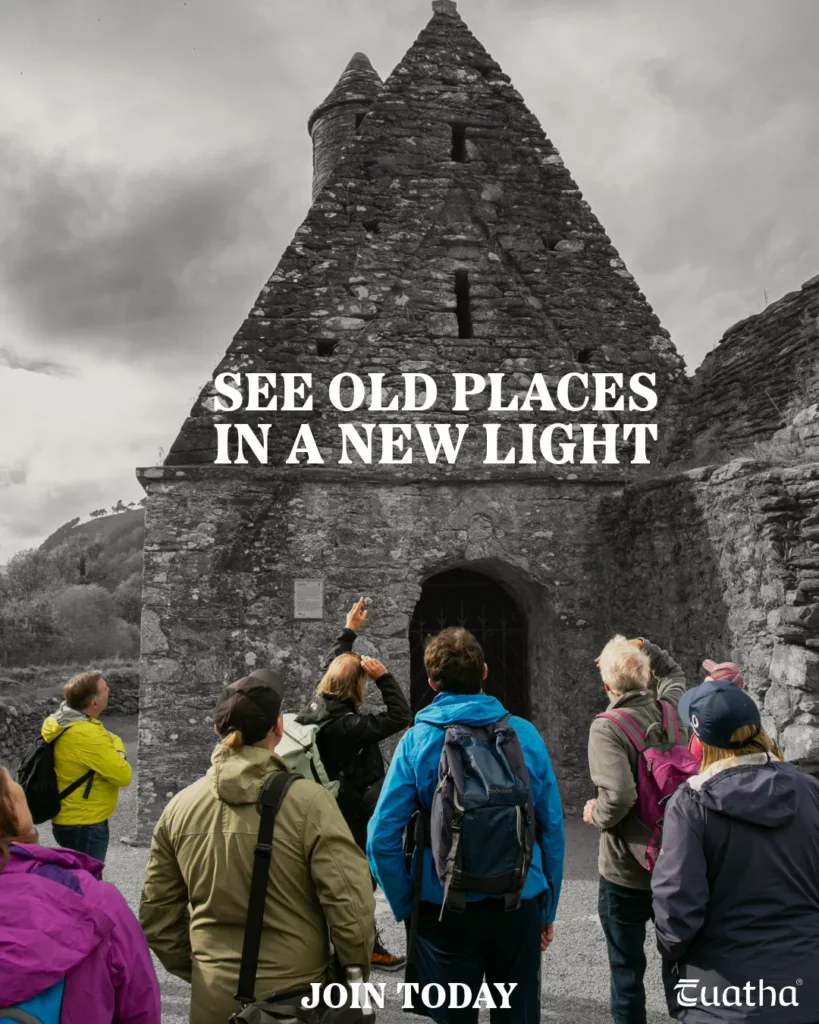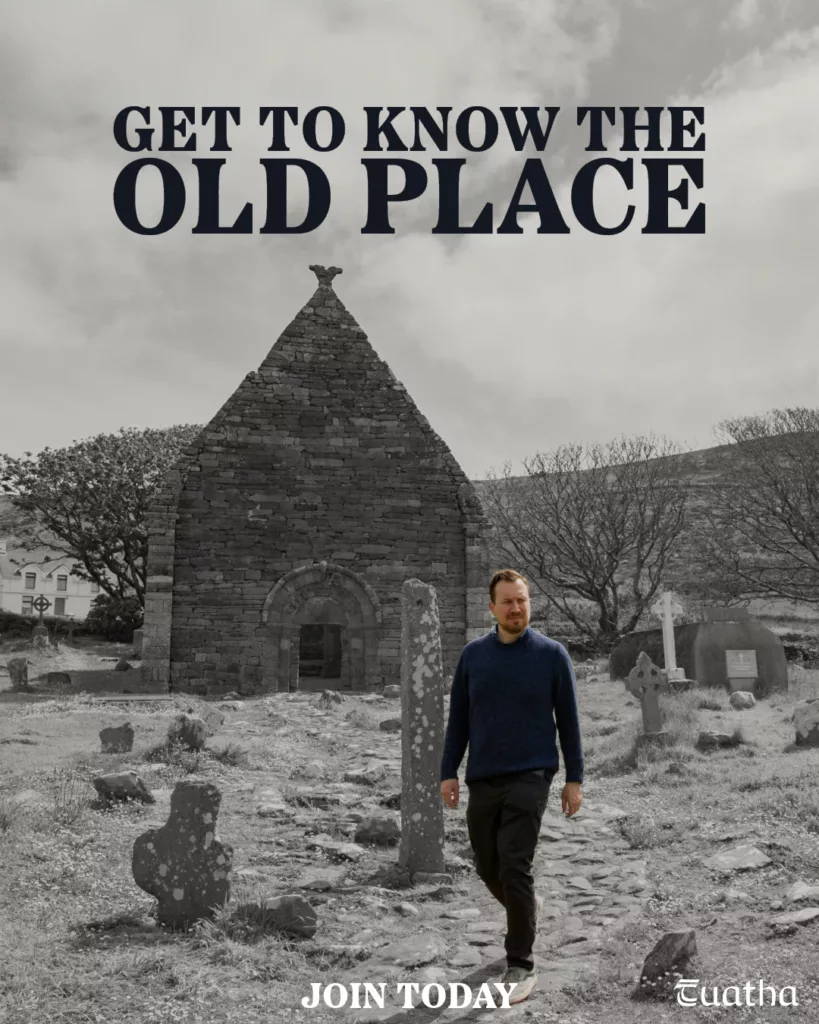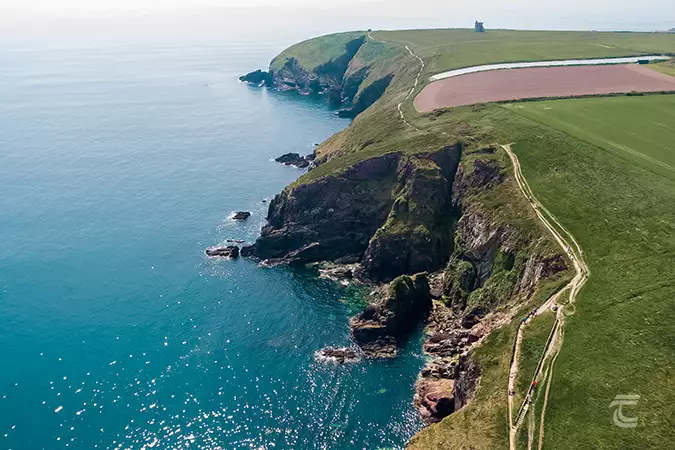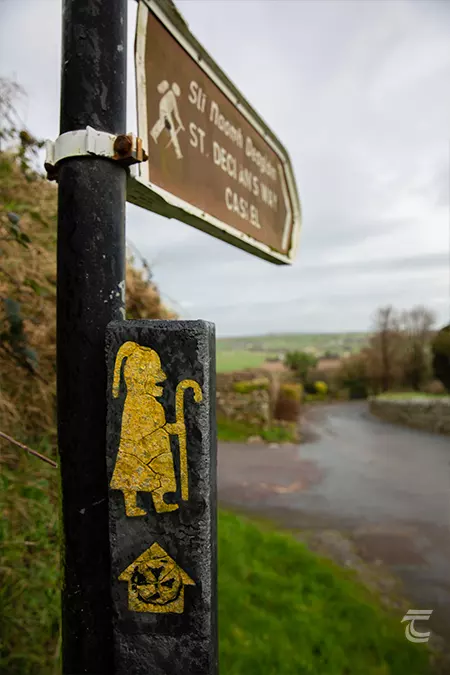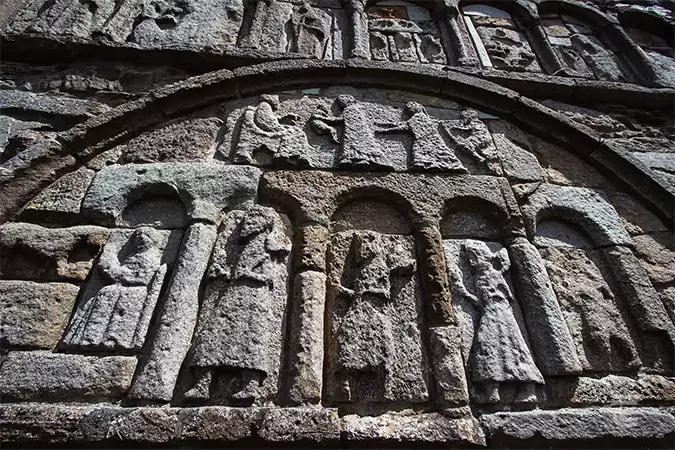Ardmore Cliff Walk
The Ardmore Cliff Walk is an elemental experience of stunning scenery and fascinating heritage. Its clifftop paths and laneways offer breathtaking views and all the bracing sea air you could wish for. The full walk begins just beyond the car park of the Cliff House Hotel, before bringing you to the ruins of St Declan’s Church, (possibly on the site that St. Declan retreated to as a hermit near the end of his life). Next to the church you can also see St. Declan’s Well, with its interesting late-medieval crosses on top.
On a clear day the Minehead Lighthouse can be seen in the distance, and also the shipwreck of the Samson, a construction ship that was driven against the cliff in a storm in 1988 (all crew survived). The Ardmore Cliff Walk also gives wonderful opportunities to discover a little of the natural heritage of Ireland’s eastern coast. If you are fortunate you may spot dolphins, basking sharks or even whales. Seabirds such as kittiwakes, sand martins, rock pigeons and choughs are all common sights and sounds.
Follow the path and ascend Ram’s Head for a wonderful vista that extends as far as Capel Island off the coast of Cork and beyond to Ballycotton Island. Two coastal lookout stations can bee seen, and a tall tower that dates from the Napoleonic wars of the early 19th century. Further along the path you will encounter a stone structure built over a natural spring in the early 20th century, known as Father O’Donnell’s Well. Take the right-hand path at the fork and follow the boreen (small lane) until the round tower comes back into view. Then follow the tower back to the monastery to complete the walk.
If the Cliff Walk isn’t quite long enough, St. Declan’s Way is a long distance walking route that connects the ancient ecclesiastical centres of Ardmore in County Waterford and Cashel in County Tipperary. It follows the route that tradition says St. Declan took when going to Cashel to meet St. Patrick, it largely follows a number of traditional pilgrimage trails that devotees have long used to visit Saint Declan’s monastery, holy well and grave in Ardmore, including the Rian Bo Phadraig (Track of St. Patrick’s Cow), Bothar na Naomh (Road of the Saints), Casan na Naomh (Path of the Saints) and St. Declan’s Road. For more information on St. Declan’s Way see this website.
For practical information about visiting this site Click Here
The Ardmore Cliff Walk is an elemental experience of stunning scenery and fascinating heritage. Its clifftop paths and laneways offer breathtaking views and all the bracing sea air you could wish for. The full walk begins just beyond the car park of the Cliff House Hotel, before bringing you to the ruins of St Declan’s Church, (possibly on the site that St. Declan retreated to as a hermit near the end of his life). Next to the church you can also see St. Declan’s Well, with its interesting late-medieval crosses on top.
On a clear day the Minehead Lighthouse can be seen in the distance, and also the shipwreck of the Samson, a construction ship that was driven against the cliff in a storm in 1988 (all crew survived). The Ardmore Cliff Walk also gives wonderful opportunities to discover a little of the natural heritage of Ireland’s eastern coast. If you are fortunate you may spot dolphins, basking sharks or even whales. Seabirds such as kittiwakes, sand martins, rock pigeons and choughs are all common sights and sounds.
Follow the path and ascend Ram’s Head for a wonderful vista that extends as far as Capel Island off the coast of Cork and beyond to Ballycotton Island. Two coastal lookout stations can bee seen, and a tall tower that dates from the Napoleonic wars of the early 19th century. Further along the path you will encounter a stone structure built over a natural spring in the early 20th century, known as Father O’Donnell’s Well. Take the right-hand path at the fork and follow the boreen (small lane) until the round tower comes back into view. Then follow the tower back to the monastery to complete the walk.
If the Cliff Walk isn’t quite long enough, St. Declan’s Way is a long distance walking route that connects the ancient ecclesiastical centres of Ardmore in County Waterford and Cashel in County Tipperary. It follows the route that tradition says St. Declan took when going to Cashel to meet St. Patrick, it largely follows a number of traditional pilgrimage trails that devotees have long used to visit Saint Declan’s monastery, holy well and grave in Ardmore, including the Rian Bo Phadraig (Track of St. Patrick’s Cow), Bothar na Naomh (Road of the Saints), Casan na Naomh (Path of the Saints) and St. Declan’s Road. For more information on St. Declan’s Way see this website.
For practical information about visiting this site Click Here
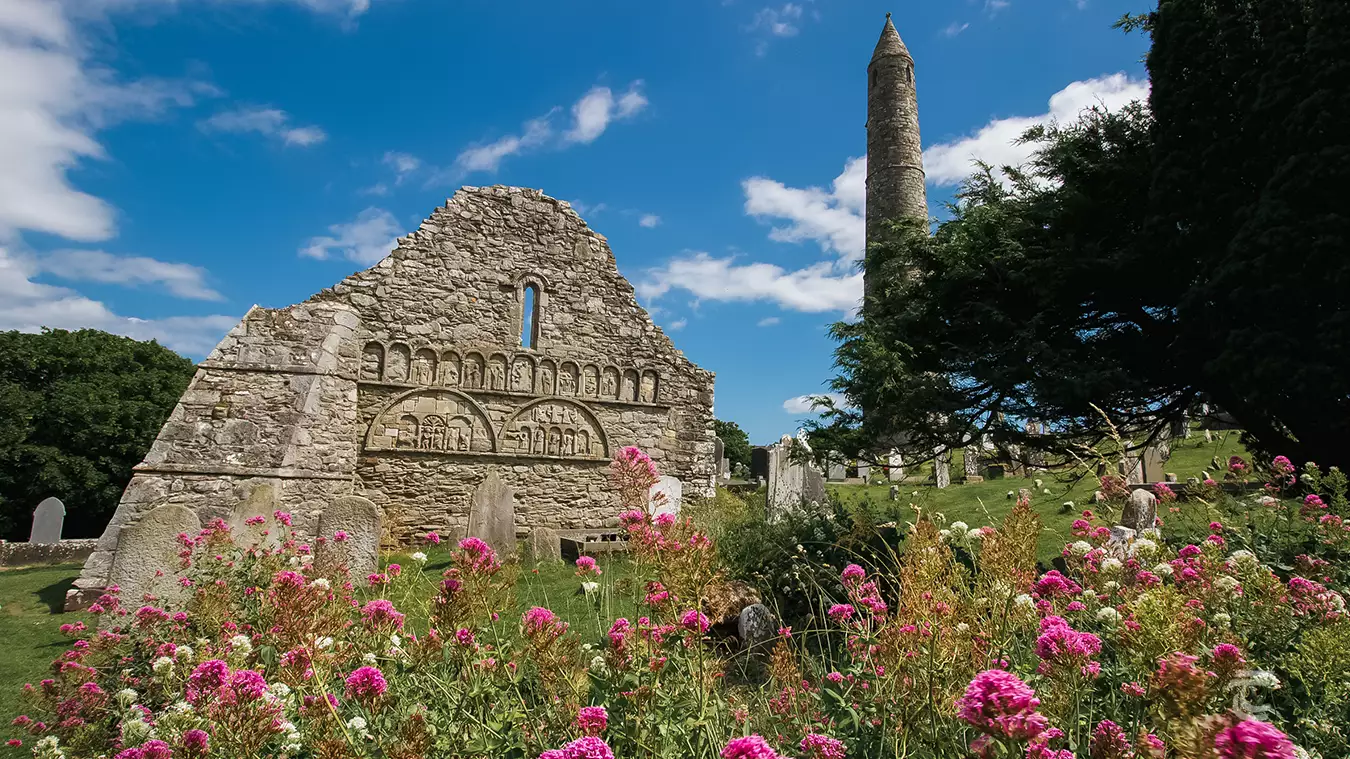
St Declan’s Cathedral and the Ardmore Round Tower • Waterford
St. Declan of Ardmore
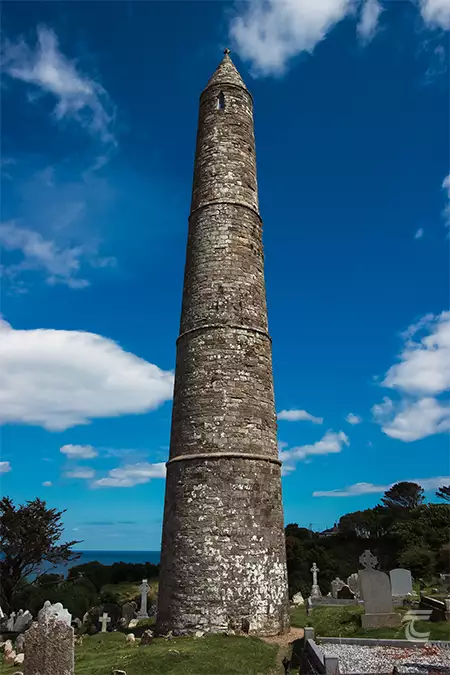
Ardmore Round Tower • Waterford
St. Declan of Ardmore (or Déaglán) is one of the pre-eminent figures in the early Irish church, especially here in Munster. Much of what we know of Declan comes from texts written centuries after his life that are hagiographical in nature, and often imbued with political messages. He is associated with the great tribe of Waterford known as the Déise. According to his Life, Declan was one of four saints (along with Ailbe of Emly, Ciarán of Saigir and Abbán of Moyarney) who preached the Gospel in Munster before Patrick arrived in Ireland. In one story, Declan and Patrick met at Cashel, and this event is commemorated in a long distance trail known as St. Declan’s Way (see below).
Though the story of Declan preaching Christianity before Patrick has to be taken with a reasonable degree of scepticism, we know that the Déise in particular were perhaps more likely to have prolonged contact with Christianity than many of their rival tribes from elsewhere in Ireland. The Déise inhabited parts of west Wales, and would have connected Munster to Christian communities in Roman Britain through trade and movement.
However, it is important to never take hagiographical writing about early Irish saints at face value. The focused writing on him in the 12th century may be seen as part of the competition between Ardmore and Lismore. This competition was driven over which monastery would be appointed as the episcopal see, gaining power, prestige and wealth along with the role of bishop. It was a struggle that Lismore eventually won.
Whatever the truth about St. Declan, his monastery at Ardmore has long been a place of significance, and Declan became a key devotional figure who inspired pilgrimages for centuries, with large crowds that gathered every year for his feast day on the 24th July. The site of his monastery is beautifully positioned, as the indicated by the name Ardmore that derives from the Irish ‘Ard Mór’ meaning ‘a great height’. The monastery was believed to have been founded by St. Declan himself sometime in the 5th century, though there is little that dates to that early period visible, beyond traces of what appears to be the early monastic enclosure that can be made out to the north-west when viewed on Google Maps satellite view. An unusual round tower, a small stone oratory and a medieval cathedral with ogham stones all indicate the importance of the site. Each of the key features is detailed further below the gallery. You can access the monastic site by simply heading into the village of Ardmore in County Waterford and follow the signs up the hill. But it is much more rewarding to discover them by taking the Ardmore Cliff Walk. On a fine day there are few more exhilarating experiences than the Ardmore Cliff Walk. It combines a stretch of truly lovely coastline with early medieval monastic remains with a good dollop of natural heritage all along the way.

Ardmore Round Tower • Waterford
Key Features on the Ardmore Cliff Walk
St. Declan’s Church (or Disert)
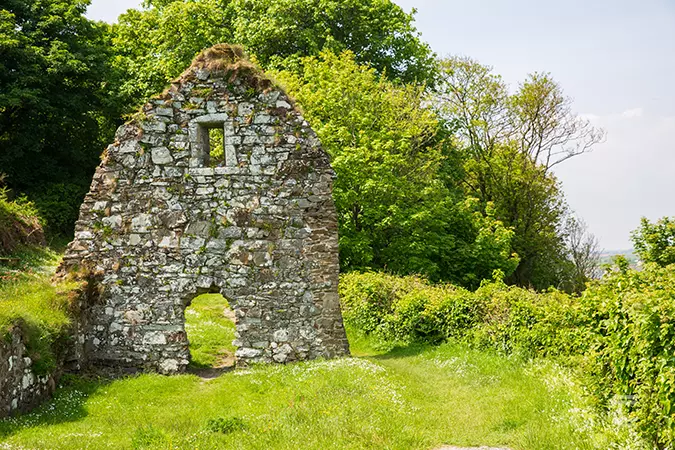
St Declan’s Church • Ardmore
The ruin of this small stone church is known as St. Declan’s Disert, or Desert, and it is traditionally believed to be a hermitage where St. Declan retired to die in peace, away from the bustle of the monastery. St. Declan’s Life records that ‘he lived at that time in a narrow place close to the sea, where a shining stream flows down from the hills above. It is surrounded by trees and bushes, and is called Declán’s Desert…Declan went there to avoid the noise, so he could pray and fast there’. The building appears to be late medieval in date, and possibly formed part of the pilgrimage tradition that focused on the site. It stands just next to St. Declan’s Holy Well.
St. Declan’s Holy Well
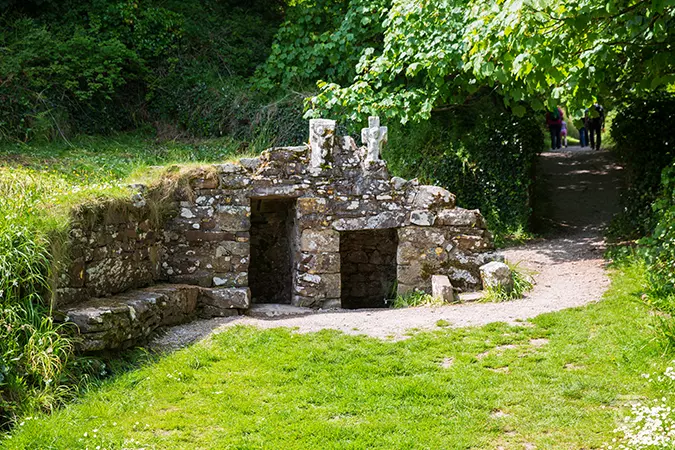
St. Declan’s Holy Well • Ardmore
St. Declan’s Well appears to be late medieval in date, and it is capped with two stone crosses. It was an important part of the pilgrimage tradition. Up into the earlier part of the 20th century, pilgrims came in their droves to spend all night in prayer at the well. An account from 1840 described how ‘the crowd formed a long line winding up the narrow path that leads to St. Declan’s Chapel… on your right hand is the well St. Declan blessed. Then they knelt down and said their prayers… at twenty different periods I counted the people as they passed. They averaged fifty-five a minute, which gives a total of twelve or fifteen thousand persons.’

St. Declan’s Holy Well • Ardmore
Ardmore Round Tower
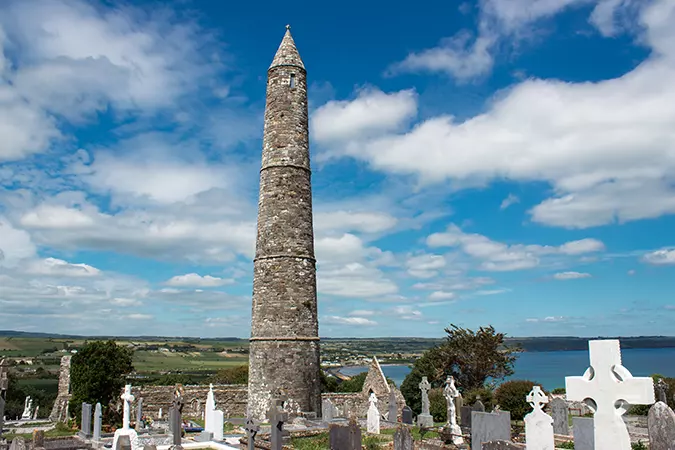
Ardmore Round Tower • Waterford
Ardmore’s round tower is one of the most striking examples in Ireland. It is a little later than most, as it is believed to be 12th century, with elements of Romanesque architecture. It tapers to a height of 30 metres (98 ft) and has a doorway positioned about 4 metres (13 ft) above ground level. The round rower is also unusual in the three distinct external ring courses, after each of which the wall is inset a little which adds to the dramatic tapering effect, giving it the appearance of an old-style folding telescope. The location of the tower to south of the cathedral, rather than to the usual south-west, has led Professor Tadhg O’Keeffe to speculate that the tower may be older than the cathedral. Interestingly, a number of corbels are apparent inside the tower, some of which are carved with grotesque human heads. I’d love to have a look at that myself!
St. Declan’s Oratory | St. Declan’s House
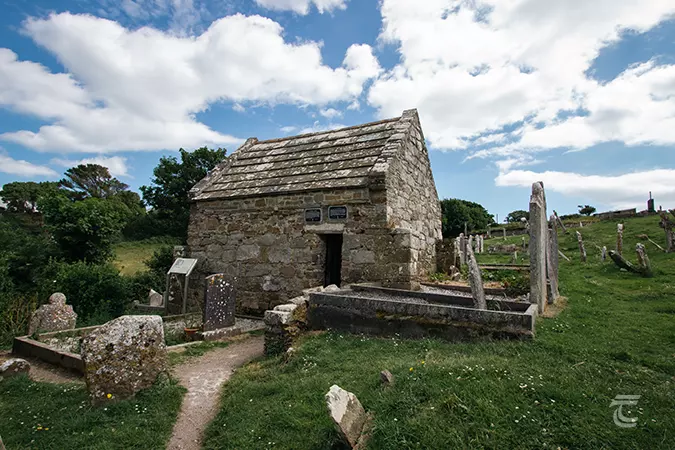
St Declan’s Oratory | St Declan’s House • Ardmore
The earliest structure is the small building called St Declan’s Oratory or St. Declan’s House, which may date as early as the 8th century, and reputedly houses the grave of St Declan. It is a tomb-church with projecting antae and noticeably larger stones forming the lower courses of the building. It was renovated in 1716 by Dr Thomas Mills, Bishop of Waterford, who added the northern doorway, restored the stone roof restored and altered the eastern window, it was at this time that an ogham stone was found here, and moved inside the cathedral. The building has a limestone flagged floor that surrounds a rectangular pit, that was traditionally believed to be the grave of St. Declan. Pilgrim’s took samples of earth from here to protect against disease. A small cross-inscribed black stone known as the Duivhin Deaglain or Dhubheen Deaglain – the little black stone of Declan – was found here, but it has long since been lost.

St Declan’s Oratory | St Declan’s House • Ardmore
St. Declan’s Cathedral, Ardmore
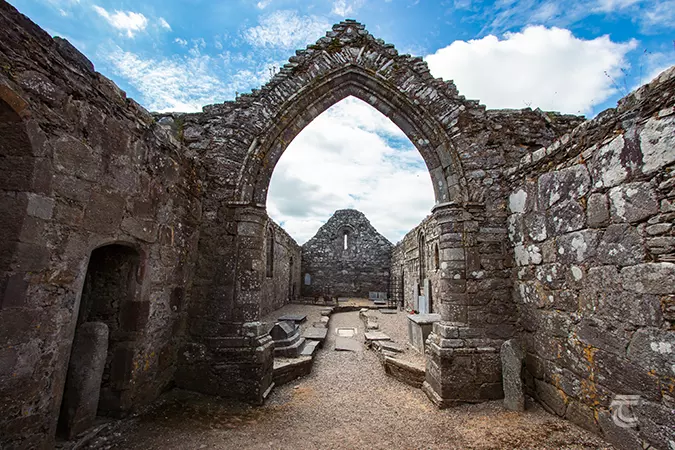
St Declan’s Cathedral • Ardmore
The largest building on site is the ruin of the cathedral, which dates to the second half of the 12th century. It consists of a long nave and chancel. It has a fine chancel arch, along with a number of typically Hiberno-Romanesque features, such as rounded doorways and windows. Inside the cathedral you can find three ogham stones which provide more evidence of the earliest phase at Ardmore. You can also see a number of medieval graveslabs in the cathedral.
The cathedral was extensively modified in the 17th century, when large buttresses were added and the chancel enlarged. A series of early medieval sculpture set within Romanesque arcading can be seen on the western gable end of the cathedral, which is a very unusual feature. The style of artwork and the Romanesque arcading certainly suggest it is from the time of the bishopric around the 12th to 13th centuries, but it may have been moved to its present location during the works in the early 17th century. Though Professor Tadhg O’Keeffe suggests the sculpture may have been influenced by French Romanesque architecture. The chancel of the cathedral continued in use as a Protestant church until 1838, when the present Church of Ireland was constructed nearby.
Ardmore Ogham Stones
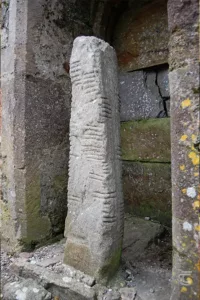
Ogham Stone in St Declan’s Cathedral • Ardmore
Inside the cathedral you can find three ogham stones which provide more evidence of the earliest phase at Ardmore. An inscription on one of the ogham stones has been translated as:‘the stone of Lugaid, grandson of Nia-Segmon’. According to Dr. Nora White of the Ogham in 3D project, Nia Segamon is listed in the historical sources as a prehistoric king of Cashel and that his ‘supposed grandson, Lugaid Luaigni, is also listed as a prehistoric king of Munster and Ireland’. It may be that this inscription commemorates this important king. The fact that MUCOI NETA-SEGAMONAS ‘descendant of Nad-Segamon’ is also found on other ogham stones nearby may suggest that this was a dynasty which controlled the area of Waterford in the 5th century. For more on ogham stones check out this fascinating episode of Amplify Archaeology.

Ogham Stone in St Declan’s Cathedral • Ardmore
Upper left: Aerial view of the Ardmore Cliff Walk • Lower left: Figurative scenes on the cathedral • Right: St Declan’s Way
Top: Aerial view of the Ardmore Cliff Walk • Middle: St Declan’s Way • Bottom: Figurative scenes on the cathedral
Ardmore Cliff Walk Visitor Information
A wonderful combination of stunning scenery and fascinating stories, the Ardmore Cliff Walk should be on everyone’s must-see list in Ireland’s Ancient East.
Explore more sites in Ireland’s Ancient East
